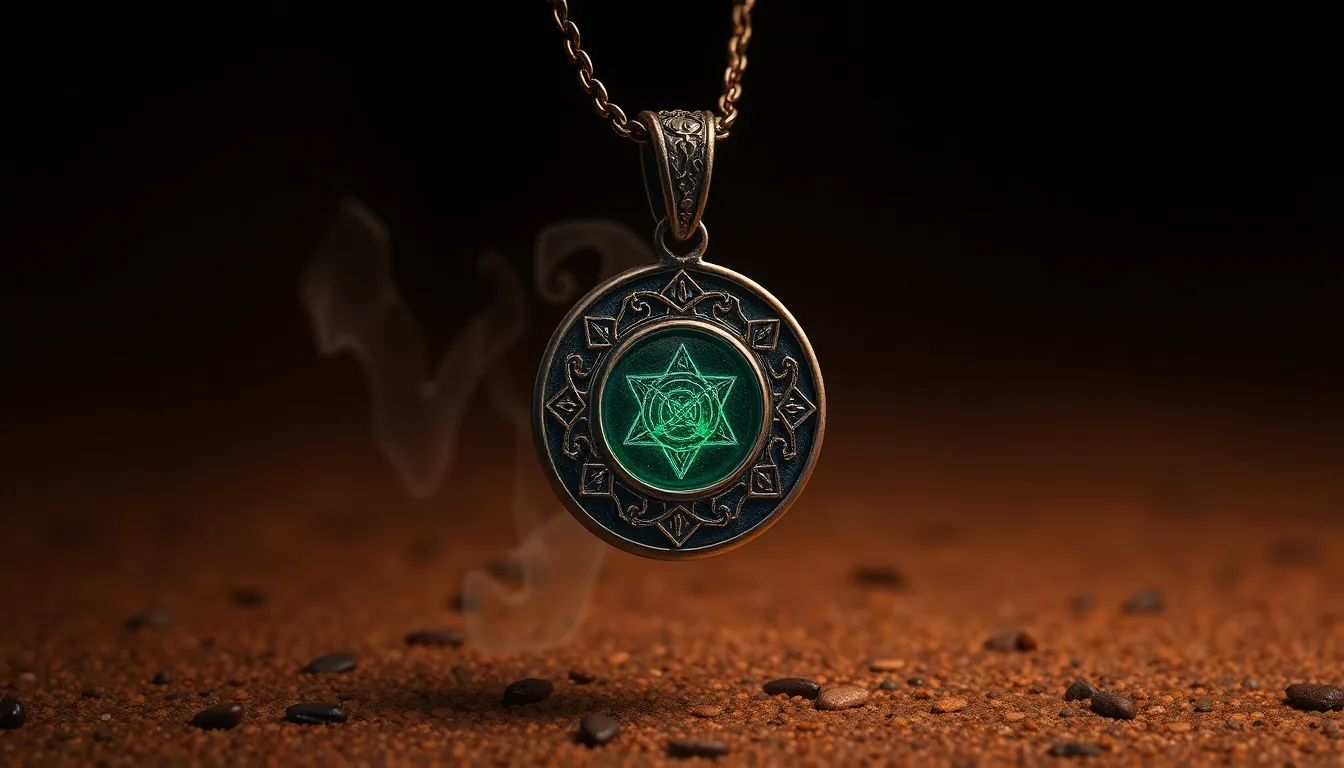The Moonstone: Myths of Night and Illumination
I. Introduction to the Moonstone
The moonstone is a captivating gemstone known for its ethereal glow and enchanting appearance. This unique stone has fascinated people for centuries, often associated with the moon due to its shimmering, light-reflective quality.
Historically, moonstone has held significant cultural relevance in various civilizations. Believed to possess mystical properties, it has been revered in both spiritual and artistic contexts. This article aims to explore the myths surrounding moonstone, delving into its symbolism, cultural significance, and the stories it inspires.
II. The Origin and Formation of Moonstone
Moonstone is a feldspar mineral that forms through the cooling and solidification of molten rock. Its distinct optical effect, known as adularescence, is created by the interference of light between different layers of the mineral.
A. Geological formation of moonstone
The geological process of moonstone formation occurs over millions of years. As magma cools, feldspar minerals crystallize, resulting in the layered structure that gives moonstone its unique optical properties.
B. Varieties of moonstone and their characteristics
- White Moonstone: The most common type, featuring a milky white appearance and a soft sheen.
- Peach Moonstone: Known for its warm, peachy hue, often associated with emotional healing.
- Blue Moonstone: A rarer variety, displaying a captivating blue sheen that is highly sought after.
- Rainbow Moonstone: Exhibits a spectrum of colors, creating a shimmering, iridescent effect.
C. Geographic sources of moonstone
Moonstone is found in several locations around the world, including:
- India
- Sri Lanka
- Madagascar
- The United States (specifically, in some locations in California)
III. The Symbolism of Moonstone in Various Cultures
Throughout history, moonstone has been imbued with rich symbolism and significance across various cultures.
A. Ancient civilizations and their beliefs about moonstone
In ancient Rome, moonstone was believed to be a piece of the moon, thought to bring good fortune and protection to travelers. Similarly, the Greeks associated it with lunar deities, believing it could enhance intuition and foresight.
B. Moonstone in Hinduism and its spiritual significance
In Hindu culture, moonstone is regarded as a sacred stone that symbolizes the moon’s energy. It is often used in rituals and is believed to bring peace, balance, and emotional healing.
C. The role of moonstone in Native American traditions
For Native American tribes, moonstone is considered a powerful protective stone, often used in ceremonial practices to enhance intuition and spiritual connection.
IV. Moonstone in Mythology and Folklore
Moonstone has inspired countless legends and myths across different cultures.
A. Legends surrounding moonstone in different cultures
Many stories depict moonstone as a talisman for love and protection. For instance, in some Asian cultures, it is believed that giving a moonstone as a gift can strengthen relationships.
B. The moonstone as a symbol of love and intuition
Moonstone is often associated with love and emotional balance, believed to enhance romantic relationships and promote deep emotional connections.
C. Folklore tales: moonstone and the moon goddess
In various folklore tales, moonstone is linked to lunar goddesses, symbolizing femininity and intuition. These narratives often depict the stone as a bridge between the Earth and the celestial realm.
V. The Moonstone in Literature and Art
Throughout history, moonstone has made its mark in literature and art, serving as a source of inspiration for many artists and writers.
A. Significant literary references to moonstone
In literature, moonstone has been referenced in numerous works, often symbolizing mystery and allure. One notable example is Wilkie Collins’ novel “The Moonstone,” which explores the themes of love, betrayal, and the supernatural.
B. Artistic representations of moonstone through history
Artists have often depicted moonstone in their works, capturing its luminous beauty and symbolic significance. From ancient sculptures to modern jewelry designs, moonstone has inspired creativity across various artistic disciplines.
C. The moonstone as a muse in modern creative works
In contemporary art and fashion, moonstone continues to be a muse, often incorporated into jewelry, textiles, and decorative arts, symbolizing elegance and mystique.
VI. The Scientific Exploration of Moonstone
Recent advances in gemology have deepened our understanding of moonstone and its unique properties.
A. The optical properties of moonstone: adularescence
Adularescence is a fascinating phenomenon that gives moonstone its characteristic glow. This optical effect results from the scattering of light within the stone’s layered structure, creating a soft, billowy light.
B. Advances in gemology related to moonstone
Gemologists have made significant strides in studying moonstone, utilizing techniques such as spectroscopy and microscopy to better understand its formation and properties.
C. The significance of moonstone in contemporary science
Moonstone’s unique properties have piqued the interest of scientists, leading to research in areas like optical materials and gem synthesis, showcasing its relevance beyond mere aesthetic appeal.
VII. The Moonstone’s Influence on Spiritual Practices
Moonstone is widely used in various spiritual practices, attributed with numerous healing properties.
A. Uses of moonstone in crystal healing
In crystal healing, moonstone is believed to promote emotional balance, enhance intuition, and support reproductive health. It is often used to align the chakras and facilitate emotional healing.
B. Moonstone in meditation and mindfulness
Practitioners often use moonstone during meditation to foster a sense of calm and to enhance spiritual awareness, connecting with the energies of the moon.
C. Rituals and ceremonies involving moonstone
Moonstone is commonly featured in rituals aimed at manifesting love, enhancing intuition, and promoting peace. It is often incorporated into ceremonies celebrating the lunar phases.
VIII. The Moonstone in Modern Culture
Moonstone has seen a resurgence in modern culture, particularly in fashion and media.
A. Current trends in moonstone jewelry and fashion
Today, moonstone jewelry is highly sought after, with designers incorporating it into rings, necklaces, and earrings, celebrating its unique beauty and spiritual properties.
B. Moonstone in popular media and its resurgence
Moonstone has also made appearances in popular culture, often portrayed as a mystical gem in films and television, further enhancing its allure.
C. The moonstone as a symbol of empowerment
In modern society, moonstone is embraced as a symbol of empowerment, particularly among women, representing intuition, emotional strength, and connection to the divine feminine.
IX. Caring for Moonstone: Myths and Best Practices
Caring for moonstone involves understanding its unique properties and debunking common myths.
A. Common misconceptions about moonstone care
Many believe moonstone is too fragile for everyday wear. However, while it requires care, it can be worn regularly with proper maintenance.
B. Best practices for cleaning and maintaining moonstone
- Clean moonstone with a soft cloth and warm soapy water.
- Avoid harsh chemicals and ultrasonic cleaners.
- Store moonstone jewelry separately to prevent scratching.
C. Myths vs. facts: debunking moonstone care beliefs
It is a myth that moonstone cannot be exposed to sunlight. While prolonged exposure may fade its color, moderate sunlight can enhance its beauty and energy.
X. Conclusion: The Enduring Legacy of the Moonstone
The moonstone continues to captivate and inspire, steeped in rich history, symbolism, and beauty. From its geological formation to its spiritual significance, moonstone transcends mere




